Top Rankings
Hampton School District ranks among the top 20% of public school district in New Hampshire for:
Category
Attribute
Overall Rank
Highest overall rank (Top 20%)
Reading/Language Arts Proficiency
Highest reading/language arts proficiency (Top 20%)
For the 2025 school year, there is 1 public preschool serving 293 students in Hampton School District.
Public Preschools in Hampton School District have a diversity score of 0.17, which is less than the New Hampshire public preschool average of 0.29.
Minority enrollment is 9% of the student body (majority Hispanic), which is less than the New Hampshire public preschool average of 16% (majority Hispanic).
Overview
This School District
This State (NH)
# Schools
3 Schools
149 Schools
# Students
904 Students
39,813 Students
# Teachers
92 Teachers
3,470 Teachers
Student : Teacher Ratio
10:1
10:1
District Rank
Hampton School District, which is ranked within the top 20% of all 189 school districts in New Hampshire (based off of combined math and reading proficiency testing data) for the 2021-2022 school year.
Overall District Rank
#32 out of 189 school districts
(Top 20%)
(Top 20%)

Math Test Scores (% Proficient)
55%
40%
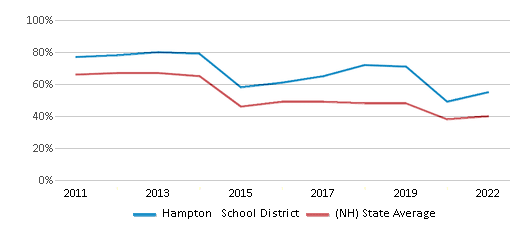
Reading/Language Arts Test Scores (% Proficient)
67%
51%

Science Test Scores (% Proficient)
45%
36%
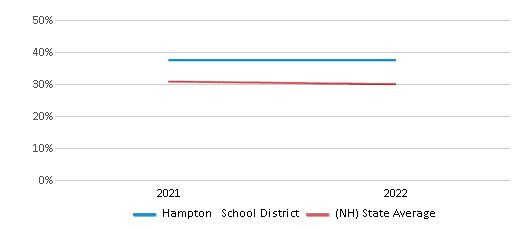
Students by Ethnicity:
Diversity Score
0.22
0.29
# American Indian Students
5 Students
71 Students
% American Indian Students
1%
n/a
# Asian Students
19 Students
952 Students
% Asian Students
2%
3%
# Hispanic Students
41 Students
2,514 Students
% Hispanic Students
4%
6%
# Black Students
5 Students
807 Students
% Black Students
1%
2%
# White Students
797 Students
33,448 Students
% White Students
88%
84%
# Hawaiian Students
1 Student
29 Students
% Hawaiian Students
n/a
n/a
# Two or more races Students
36 Students
1,992 Students
% of Two or more races Students
4%
5%
Students by Grade:
# Students in PK Grade:
-
4,442
# Students in K Grade:
93
6,330
# Students in 1st Grade:
96
6,046
# Students in 2nd Grade:
104
6,232
# Students in 3rd Grade:
91
5,421
# Students in 4th Grade:
110
5,076
# Students in 5th Grade:
108
3,284
# Students in 6th Grade:
88
1,218
# Students in 7th Grade:
108
887
# Students in 8th Grade:
106
877
# Students in 9th Grade:
-
-
# Students in 10th Grade:
-
-
# Students in 11th Grade:
-
-
# Students in 12th Grade:
-
-
# Ungraded Students:
-
-
District Revenue and Spending
The revenue/student of $27,135 is higher than the state median of $22,075. The school district revenue/student has stayed relatively flat over four school years.
The school district's spending/student of $26,106 is higher than the state median of $21,293. The school district spending/student has stayed relatively flat over four school years.
Total Revenue
$25 MM
$3,646 MM
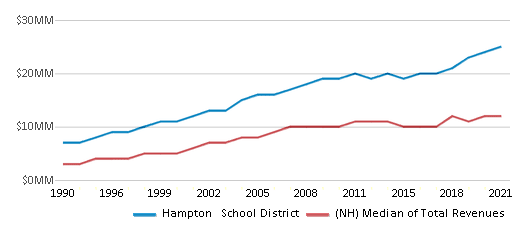
Spending
$24 MM
$3,517 MM
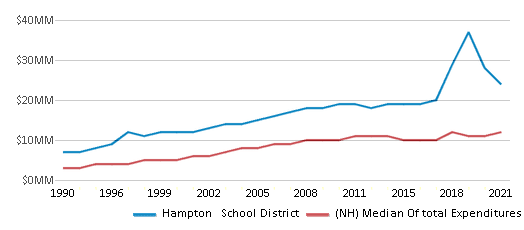
Revenue / Student
$27,135
$22,075
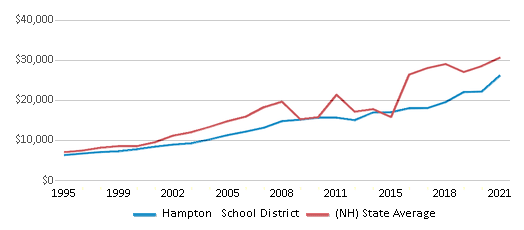
Spending / Student
$26,106
$21,293
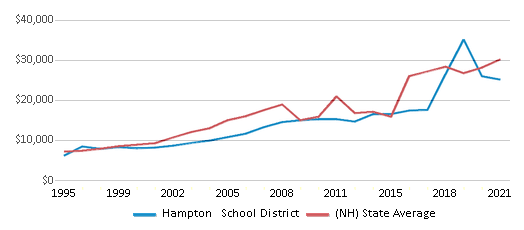
Best Hampton School District Public Preschools (2025)
School
(Math and Reading Proficiency)
(Math and Reading Proficiency)
Location
Grades
Students
Rank: n/an/a
53 Winnacunnet Rd.
Hampton, NH 03842
(603) 926-8706
Hampton, NH 03842
(603) 926-8706
Grades: PK-2
| 293 students
Recent Articles

Year-Round Or Traditional Schedule?
Which is more appropriate for your child? A year-round attendance schedule or traditional schedule? We look at the pros and cons.

Why You Should Encourage Your Child to Join a Sports Team
Participating in team sports has a great many benefits for children, there is no doubt. In this article you will learn what those benefits are.

White Students are Now the Minority in U.S. Public Schools
Increasing birth rates among immigrant families from Asia and Central and South America, combined with lower birth rates among white families, means that for the first time in history, public school students in the United States are majority-minority. This shift in demographics poses difficulties for schools as they work to accommodate children of varying language abilities and socio-economic backgrounds.





